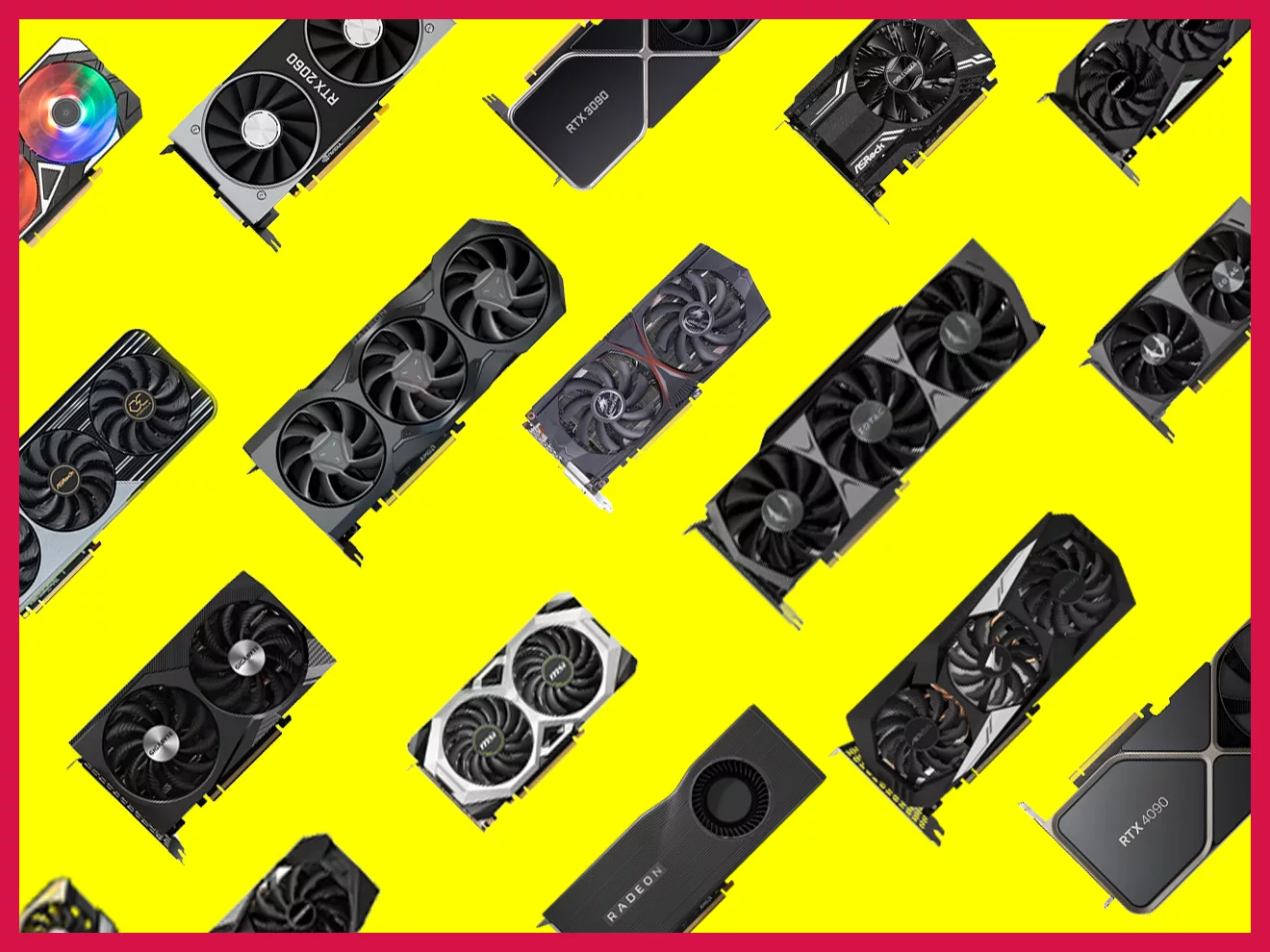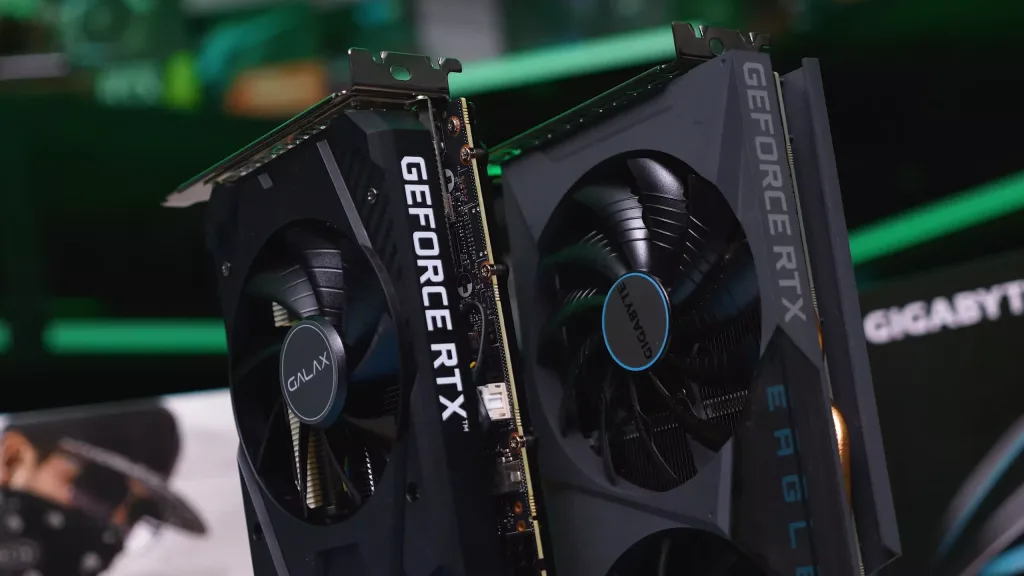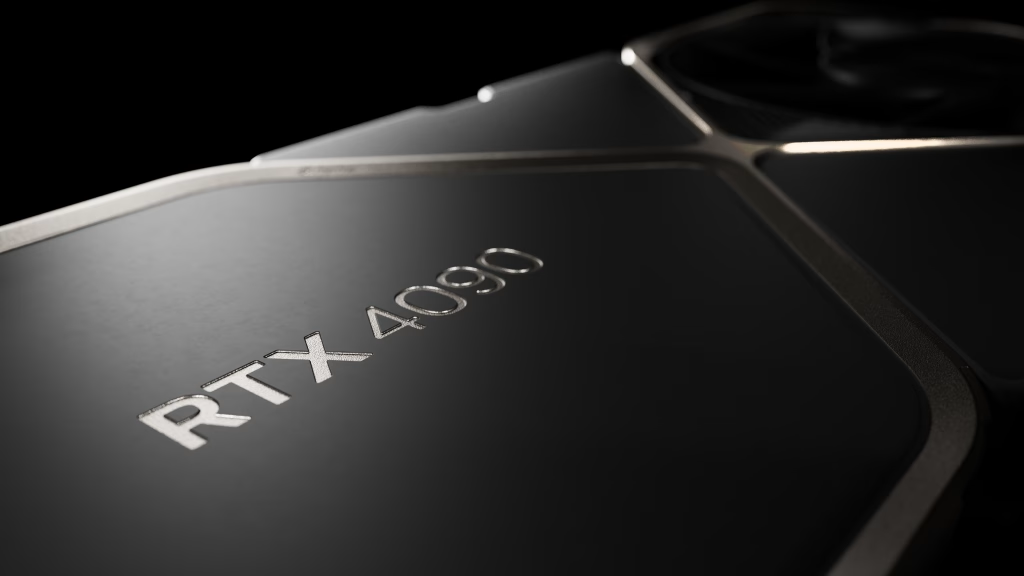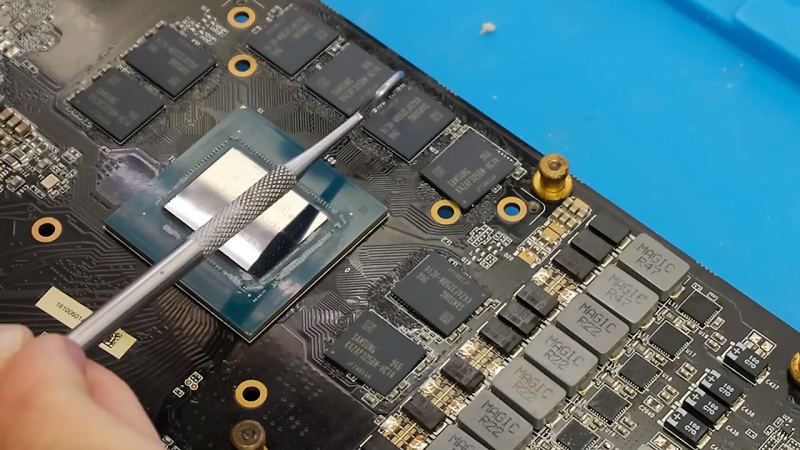It wasn’t long ago that Nvidia was the only big player in the game. Then came along AMD, chipping away at Nvidia’s gaming market share one GPU at a time. And now, we have a trinity of GPU manufacturers with Intel’s latest Arc series, which is still in the budding stage.
This guide will cover the essentials of all three brands and what their GPUs are known for. It’s intended to make your decision easier – when you’re not yet at a level to compare GPU vs. GPU and are more concerned about which brand to go for.
Nvidia
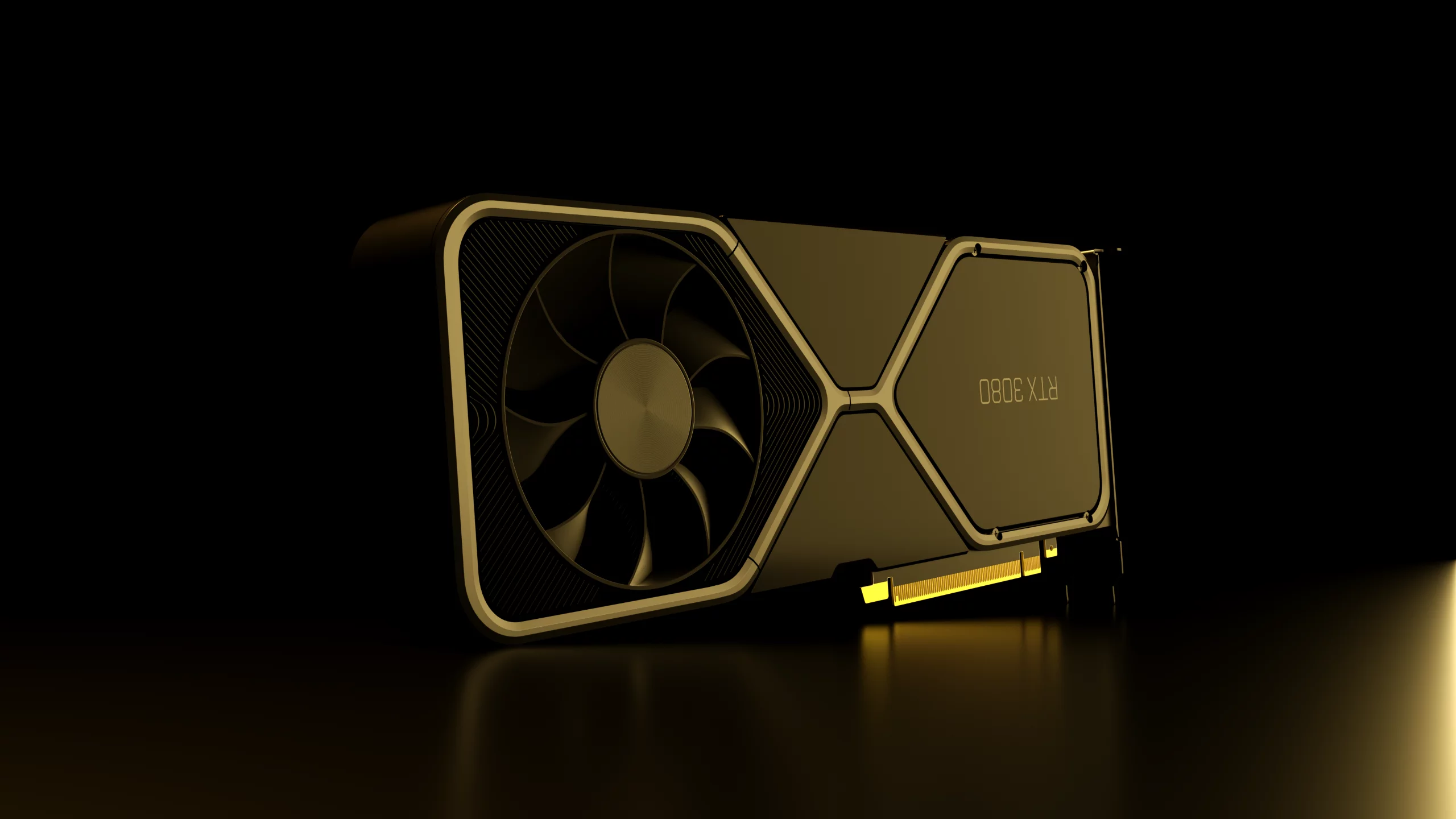
Here’s a quick summary of Nvidia’s gaming GPUs:
- Ray Tracing: Any 20 series card or higher has ray tracing cores for hardware-accelerated light reflections which make the game more immersive. Not all games support it. As one of the biggest technological improvements in video games in eternity, Nvidia takes the win by offering truly state-of-the-art ray tracing that’s unbeatable.
- DLSS: Nvidia’s latest cards starting with the 30 series have DLSS, which improves the framerates significantly. This is an upscaling technology that makes playing games on higher resolution monitors like 4K, playing triple-A games at ultra settings, and playing modern games with ray tracing on, actually practical even on lower-end hardware. The DLSS + ray tracing combination from Nvidia is simply the best modern desktop gaming experience.
- High-End: Nvidia GPUs are known to push all boundaries. Every year, it’s Nvidia’s flagship GPU that is the most powerful and high-end. No other company comes close to delivering the same level of performance as Nvidia’s highest-end card does, whether it’s gaming or content creation.
- Stable Performance: Nvidia cards generally run better. Games are better optimized for these GPUs, these cards don’t get too hot, there are fewer instability issues compared to other brands, and overall, the experience is smoother, better, and more power efficient if you go with Nvidia.
- Longevity: Even the older GPUs such as the 10 series and 16 series from Nvidia offer pretty decent performance and can run modern games without all the bells and whistles surprisingly well.
- Expensiveness: Nvidia, thanks to being the market leader and the trendsetter, has the freedom to set the prices as it wishes. Its GPUs are expensive (sometimes unfairly more expensive for a small gain in performance vs. older generations or competitors). The highest-end GPU from Nvidia will always be a few hundred bucks higher for a seemingly marginal improvement in FPS for most gamers. This is something they can do, as they are making the flagship high-end hardware that’s unparalleled.
Though Nvidia offers GPUs at all ranges – entry-level, mid-range, and high-end – their products are classically more expensive than competitors. The performance is better, of course. But there are also cases where performance is only 10-15% better compared to the AMD equivalent, for example, but the price is $100-300 more.
That being said, Nvidia has some really cost-effective cards out there. The RTX 3080, for example, is still one of the best GPUs any gamer can buy. It offers stellar performance at a good price point and even if another card can beat it at a lower price, the RTX 3080’s superiority in quality is unmatched.
As the first-mover and market leader, Nvidia has strong support from game developers, game engines, operating systems, and actual game titles. For example, if you buy an Nvidia GPU and a comparable AMD GPU and run Witcher 3 on it, the fabrics, grass, and hair will look better on the Nvidia card because the game technologies used are just better and more well-optimized for Nvidia than AMD.
Overall, you can’t go wrong with Nvidia. Just choose a good one, there are many bad deals out there.
AMD
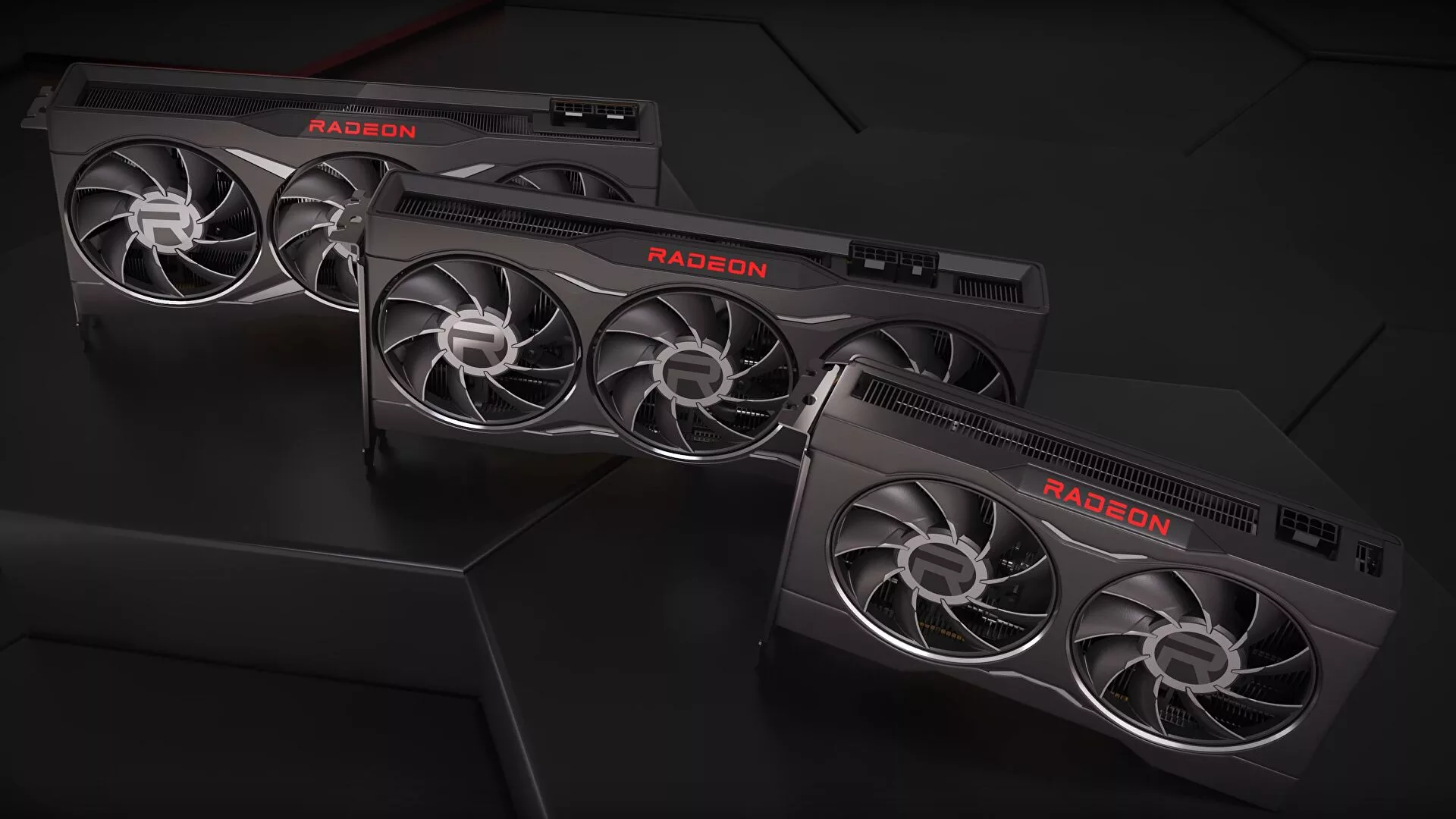
Now, let’s talk about the biggest competitor to Nvidia.
- Cheaper: AMD cards are cheaper than Nvidia in the entry-level and mid-range segments. In the high-end segment, they are still cheaper, but also less powerful.
- Hungrier: Team Red’s graphics cards tend to run hotter on average (higher temperatures), produce more noise, and draw more power compared to Nvidia’s cards. That’s been the general trend so far, though there are a few exceptions.
- Reliability: The reliability of an AMD GPU is lower than an Nvidia GPU, assuming both are comparable in performance. For example, the GTX 1660 Super or GTX 1070 are more or less comparable to the RX 580. If you test a game on all three, the GTX ones will give a more consistent and stable performance. This situation has improved significantly with each new generation, mainly because more game developers have started optimizing their games for AMD cards. Four more generations have been released since the time of RX 580, and it’s safe to say that the variance in overall consistency and even power draw is quite small now.
- Ray Tracing: AMD launched hardware-accelerated ray tracing with the RX 6000 in November 2020. In comparison, it was slightly inferior for most titles and couldn’t match the level of quality that the highest-end ray tracing Nvidia provided in its RTX 3000 series two months ago.
- FSR: AMD also has its own upscaling technology called FidelityFX Super Resolution or FSR. FSR is software-based and doesn’t require AI cores, meaning it can be used on any GPU whether it has AI cores or not. It can even be used on Nvidia cards, as Nvidia’s AI-core-dependent DLSS is not supported on GTX cards or the RTX 20 series cards (AI cores were introduced with the RTX 30 series). AMD’s FSR is not as good as DLSS, again, but provides a sizeable boost to FPS across a large variety of games on all cards – whether old or new.
AMD makes some really good graphics cards, though it lags behind Nvidia in offering the highest-end tech. If you’re building a budget gaming PC, there’s no need to look outside AMD GPUs. There’s a good one for any gamer. What’s more, the performance of newer AMD GPUs is accelerated if your PC also has an AMD CPU. Guess what, AMD CPUs are also cheaper than their competitors (Intel). So, a budget PC with an AMD GPU and an AMD CPU is a great deal. It’s been that way for many years now.
Team Red might have fewer fans but it’s been slowly innovating its way up the hierarchy, inching closer to Nvidia with every generation. If you’re not hard-locked into brand power and wish to objectively compare any two graphics cards before deciding which one to pick, check reviews of cards from both camps – AMD and Nvidia. There are many brackets where you will find a better Nvidia GPU. Take that deal without a doubt. But those are rare occurrences. Mostly, you will find AMD GPUs to offer more performance per dollar than the closest Nvidia equivalent.
At that juncture, you will need to make a decision. Check reviews on various platforms, read user testimonials, read up on the power draw and other important considerations, and factor in compatibility before you decide.
Intel
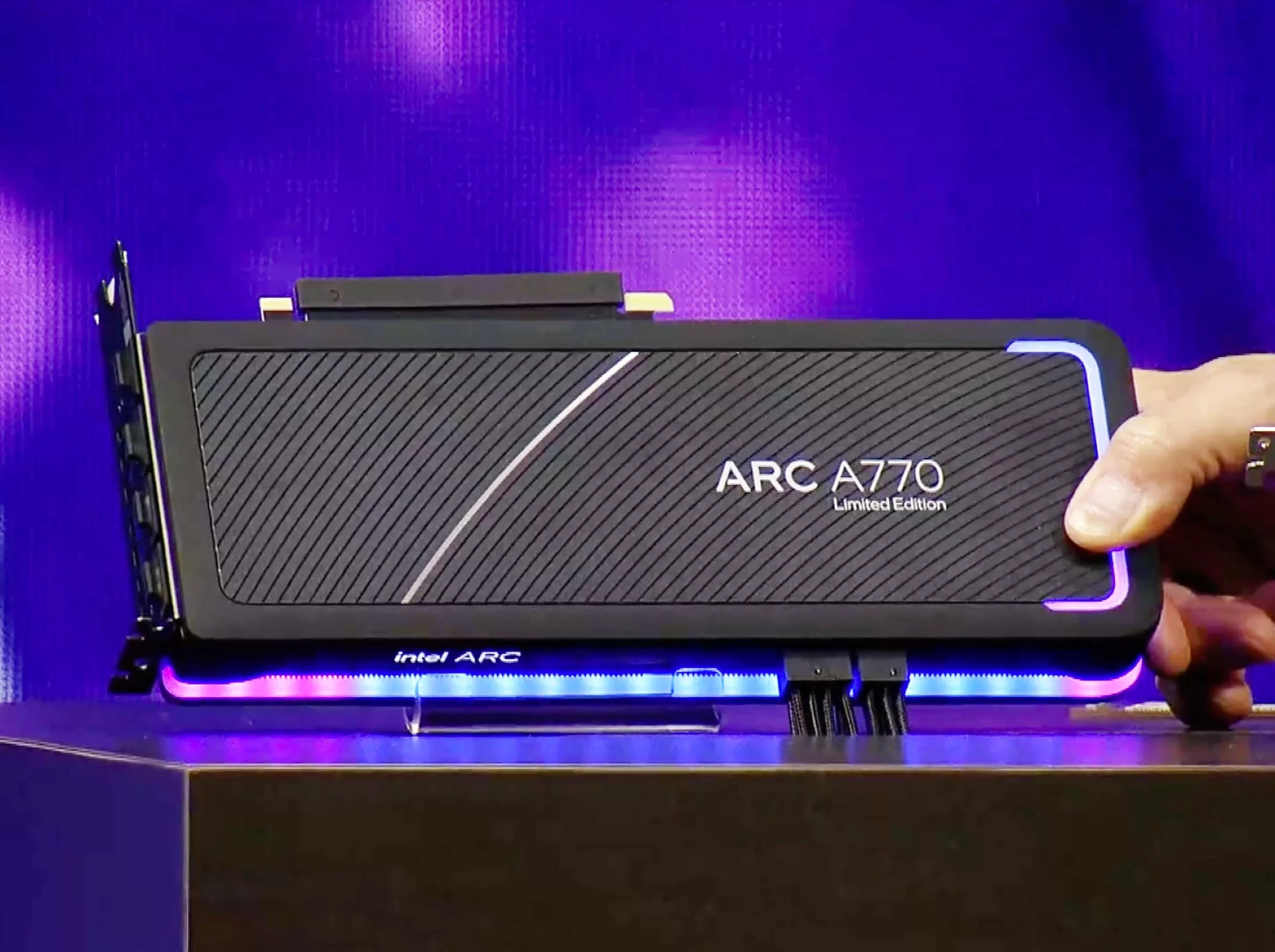
Intel has been a market leader in CPUs or processors where it competes with AMD, though here AMD has gained significant ground generation after generation, offering more cores for the same price. More importantly, all AMD CPUs are overclockable, come with a cooler, and offer better parity with AMD GPUs than Intel ones, making AMD close the gap really fast and reach roughly 35% market share compared to Intel’s 65% or so.
But we’re not here to talk processors.
Intel is the new kid on the GPU block – now competing with AMD’s Radeon lineup and Nvidia’s GeForce lineup. It has come fully prepared. It’s not a company entirely new to graphics. Remember integrated graphics and those who call themselves gamers playing on “iGPUs,” the level lower than hell’s seventh circle?
So, Intel’s been packing integrated graphics in their processors by default because that’s how the world of PCs kind of evolved (without the need for dedicated GPUs or discrete video cards). The iGPU tech is very old and Intel is the master of it. I won’t be surprised if excavations reveal that the Ancient Greeks also used a few kilobytes of integrated graphics here and there.
Intel used all it had learned and launched its Arc series of discrete GPUs. So far, the performance isn’t bad. They never said the products were excellent enough to compete with the big boys. Intel targets the larger market of smaller-scale gamers – 1080p@60, non-triple-A games, non-ray-tracing, non-4K-ultra, you get the point.
The A770 and A750 were both released in the third quarter of 2022. Taking the names directly from the world of MMOs, these products are codenamed Alchemist, Battlemage, Celestial, and Druid. Intel is supporting DirectX 12 Ultimate and offering up to 16 GB GDDR6 VRAM on its highest-end model for a small MSRP of $350.
They have grabbed attention – that’s for sure. But the launch had its fair share of trouble like glitches and issues in different games.
None of that is Intel’s fault, however.
Games take time to get optimized. Nobody wants to optimize a game for a platform (hardware or software) if it doesn’t have players on it. It’s too much work, apparently. Intel is a big name so developers are at least moving at some speed. Meanwhile, any semblance of proper, streamlined GPU support for Linux distros is lacking even from a $1.15 trillion company like Nvidia with 26,000+ employees.
Over time, Intel GPUs will be better supported and the games better optimized for them. And that will be when we do a more comprehensive comparison. For now, they have a grace period to experiment around and see what sticks.
Nvidia vs. AMD vs. Intel
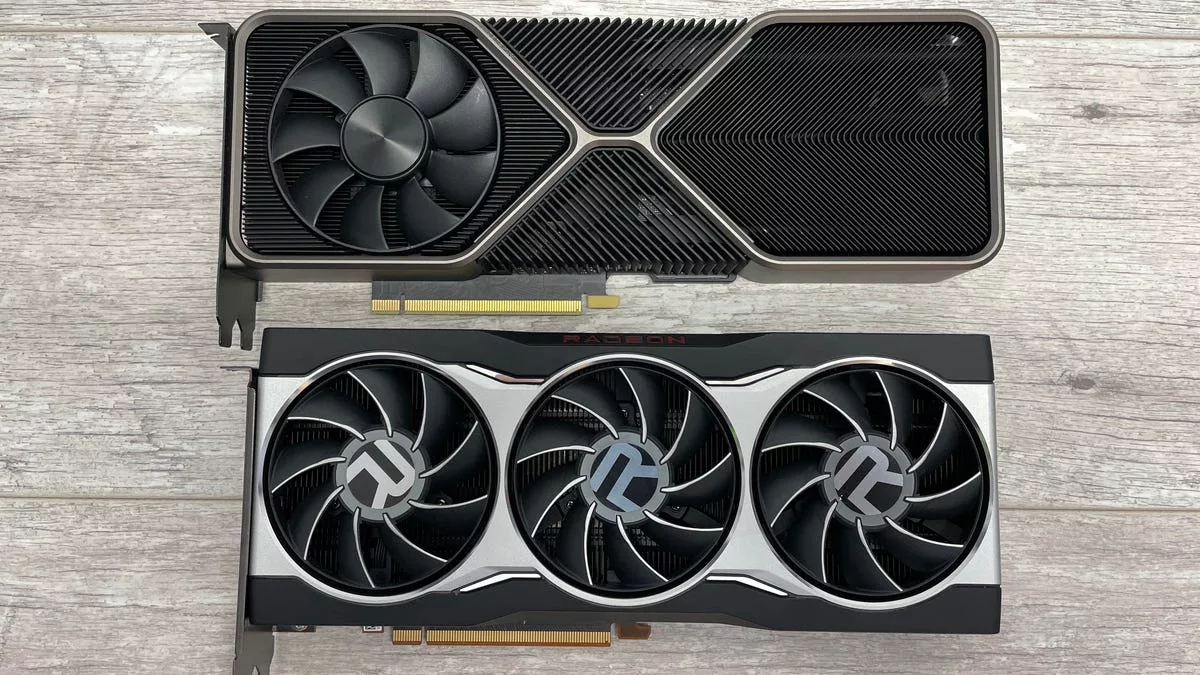
AMD manufactures discrete GPUs as well as processors. As per the latest Steam Hardware Survey, 75%+ gamers are using an Nvidia GPU compared to 16%+ AMD and 8%+ Intel. According to Jon Peddie Research, after the post-COVID slump, GPU sales are back on track and AMD has seen a 2.4% increase in market share in 2023 Q3, whereas the other two are a little behind in recovery. Overall sales have increased for all three.
Intel’s products are fairly new. Commenting on them right now can lead to inaccuracies. They are still shipping out patches and driver updates to support more games and fix glitches. It’s just not a good time to say if a particular Intel GPU is a reasonable purchase for a particular budget, as it might set unrealistic expectations or overly downplay its key features.
For now, I’d say that Intel has a clear goal – to meet the entry-level and mid-range markets head-on. They are ready with all the fancy tech as well. For example, they have launched with their own upscaling technology (XeSS) to compete with DLSS and FSR since Day 1. There are good things in store for gamers with the duopoly becoming a three-player market but we will need to give Intel a few years’ time before they really nail it down.
That leaves us with the Nvidia vs. AMD argument.
AMD is the #2 mainly because it was late to the party. Whereas Nvidia started its GeForce (gamer-oriented brand) back in 1999 and became popular with the GeForce 900 series and the GeForce 10 series in 2014-15, AMD started with the Radeon R200 in 2001 and took significantly longer to be a prominent player. The first good series was arguably the RX 400 or RX 500, both released in 2016. With the RX 500, gamers started looking at the company for its cost efficiency and reliable performance, and AMD’s aim to gain trust and get a foothold finally materialized in ~15 years.
By this time, however, Nvidia was already shipping out the latest and greatest in graphics card technology and AMD was only playing catch up, year after year. Fast forward to 2022 when Nvidia released the 40 series and AMD released its RX 7000 series – and AMD was still playing catch up, offering similar performance for lower prices, but never beating Nvidia in any meaningful way.
In 2024, Nvidia’s 50 series and AMD’s 8000 series will likely be a similar story.
Sure, some models from Nvidia are overpriced. AMD’s equivalent offers the same or better performance for cheaper. If someone was looking for under-$400 GPUs, for example, Nvidia’s options would be RTX 3060, RTX 4060, or the now outdated GTX 1660 Super. In comparison, AMD’s RX 6700 XT beats all of them. At the same price point. It runs hotter, might have marginally poorer game optimization, and draws more power. But those aren’t really big issues for most gamers.
Still, Nvidia’s dominant presence makes it a more trustworthy company. If I were to draw a parallel, it would be akin to Samsung vs. OnePlus in Android smartphones or ASUS vs. Dell in laptops. Consumers flock to the more established brand (Samsung or ASUS vs. OnePlus or Dell) not just because it’s more trustworthy, but because it also has better resale value, reliability, support, brand recognition, and so on.
It’s been 7 years since AMD and Nvidia have been going head-to-head in terms of benchmarks and performance comparisons. This is enough time to establish Team Red as a serious contender that shouldn’t be ignored just because it has a smaller market share. Never shrug off AMD’s cards for any trust, brand, or support issues. Now, it’s up to you if you wish to choose the market leader for all its excellence or save money by siding with the underdog.


